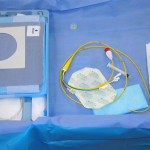 Every year the Department of Health and Human Services Office of the Inspector General conducts audits and on-site inspections of Health Care Facilities to ensure that billing and payment policies are being followed. Recovery audit contractors are utilized to make the inspections and are reimbursed by collecting a percentage of the money saved due to the inspection. In other words, the more billing discrepancies they uncover, the more they make. The office of the Inspector General has over 600 auditors, the largest number of auditors of any Federal Agency.
Every year the Department of Health and Human Services Office of the Inspector General conducts audits and on-site inspections of Health Care Facilities to ensure that billing and payment policies are being followed. Recovery audit contractors are utilized to make the inspections and are reimbursed by collecting a percentage of the money saved due to the inspection. In other words, the more billing discrepancies they uncover, the more they make. The office of the Inspector General has over 600 auditors, the largest number of auditors of any Federal Agency.
Writing for the on-line blog MiraMed, Tony Mira discusses the 2013 OIG work plan and the implication for hospitals. According to Mira,
“While the Work Plan sets forth the OIG’s attention for the upcoming year, it also provides insight into the attention other agencies and contractors (e.g., the Centers for Medicare and Medicaid Services (CMS), Recovery Audit Contractors (RACs), etc.) will pay, as well. When the OIG cracks down on one body (e.g., CMS), that body cracks down on bodies beneath it (e.g., Medicare Administrative Contractors (MACs)), sending a ripple downstream all the way to the provider. As such, it is important for providers to be aware of the OIG’s focal points in the upcoming year as they, too, will feel the impact.”
Click here to review the OIG 2013 work plan
According to the plan, several ongoing areas of review remain from previous work plans:
- Hospitals—Same-Day Readmissions
- Program Integrity—Medical Review of Part A and Part B Claims Submitted by Top Error-Prone Providers
- Program Integrity—High Cumulative Part B Payments
- Physicians—Error Rate for Incident-To Services Performed by Nonphysicians
- Physicians—Place-of-Service Coding Errors
- Evaluation and Management (E/M) Services—Potentially Inappropriate Payments in 2010
New areas of interest for review in 2013 include:
- Hospitals—Inpatient Billing for Medicare Beneficiaries
- Hospitals—The DRG Window
- Hospitals—Non-Hospital-Owned Physician Practices Using Provider-Based Status
- Hospitals—Compliance with Medicare’s Transfer Policy
The OIG has published a video discussing the priorities of the 2013 work plan. Click here to view the video.
As anesthetists, it is essential that our records and the billing for our services are accurate. Inspectors have a plan to uncover billing fraud and recover excess payment. As providers, we must be aware of the issues being audited.






